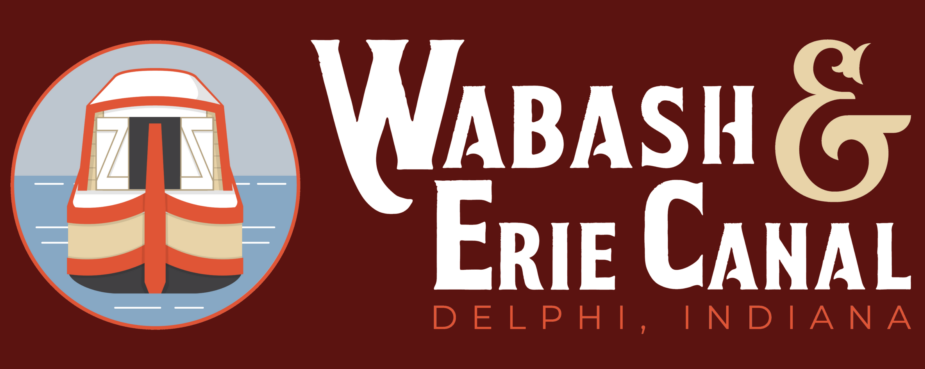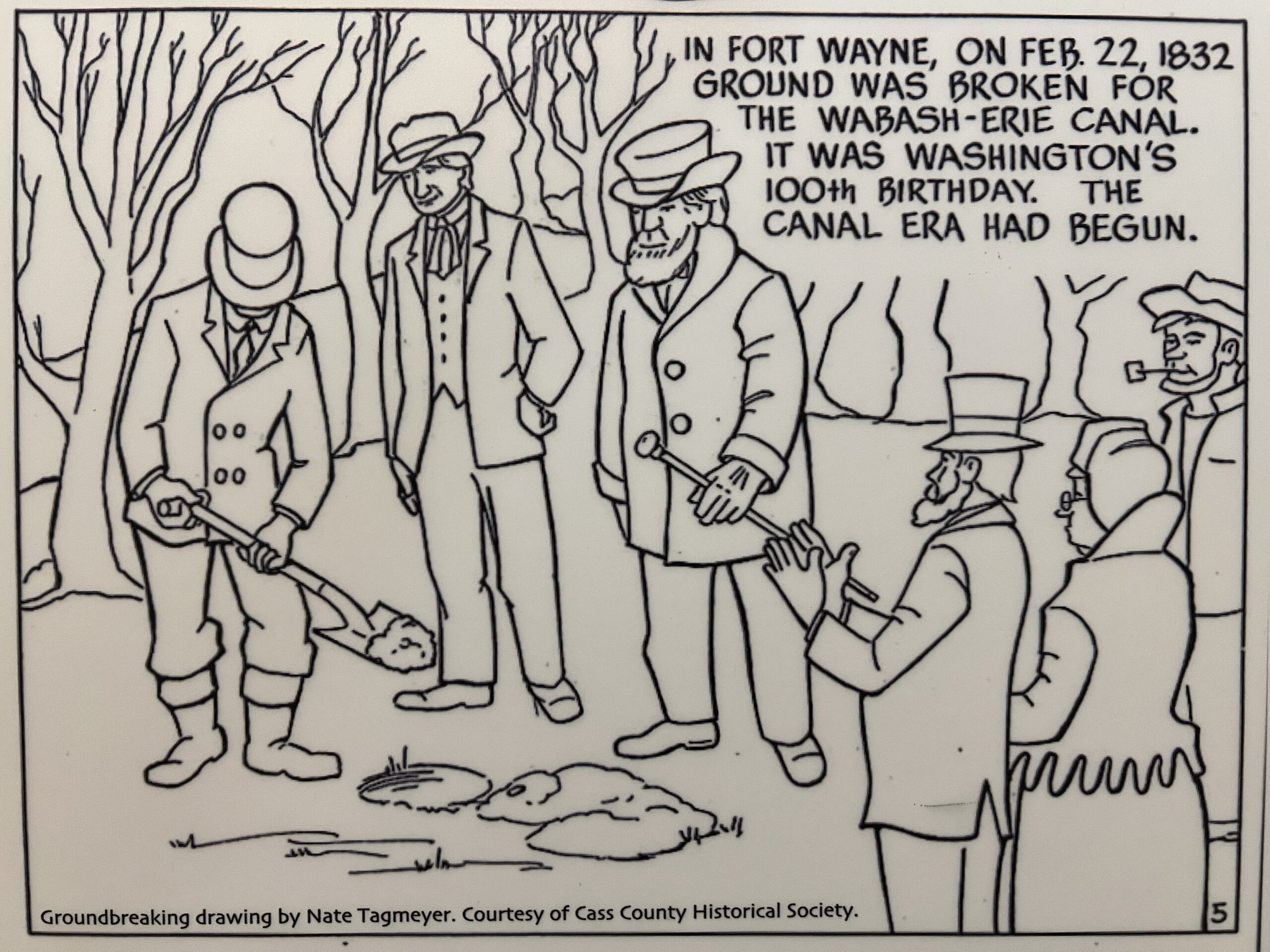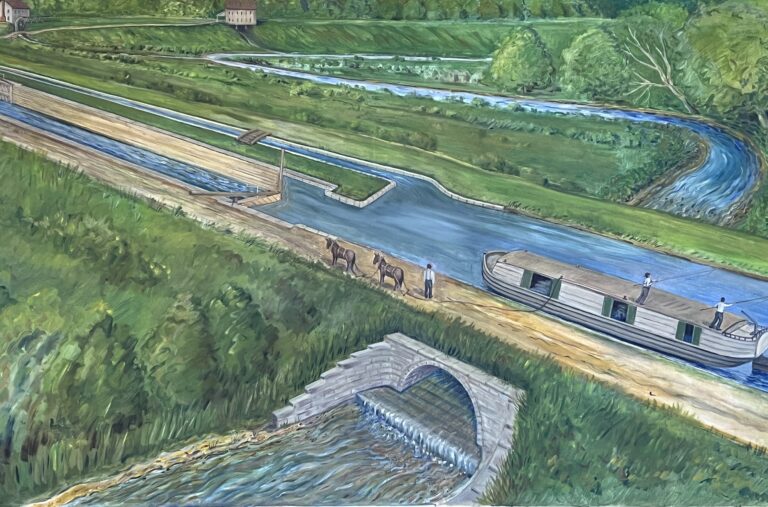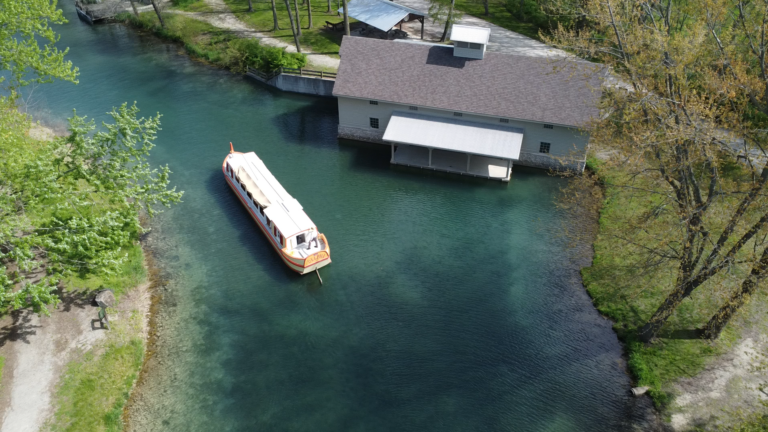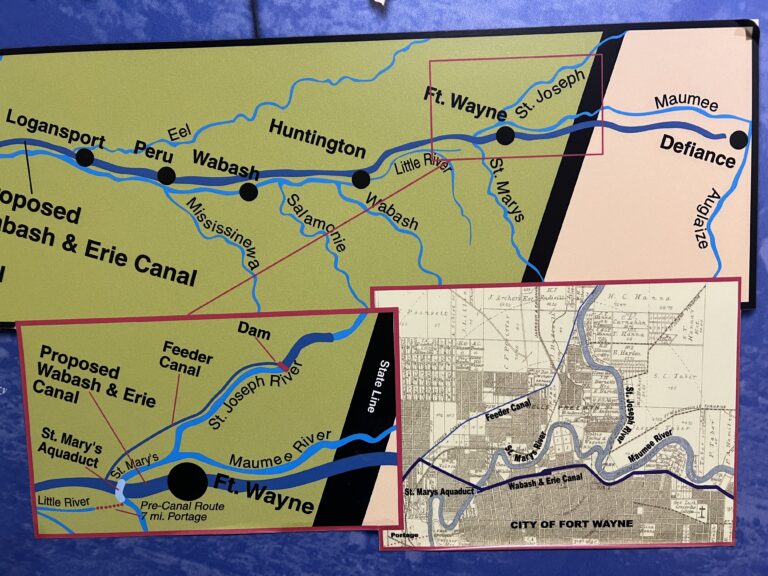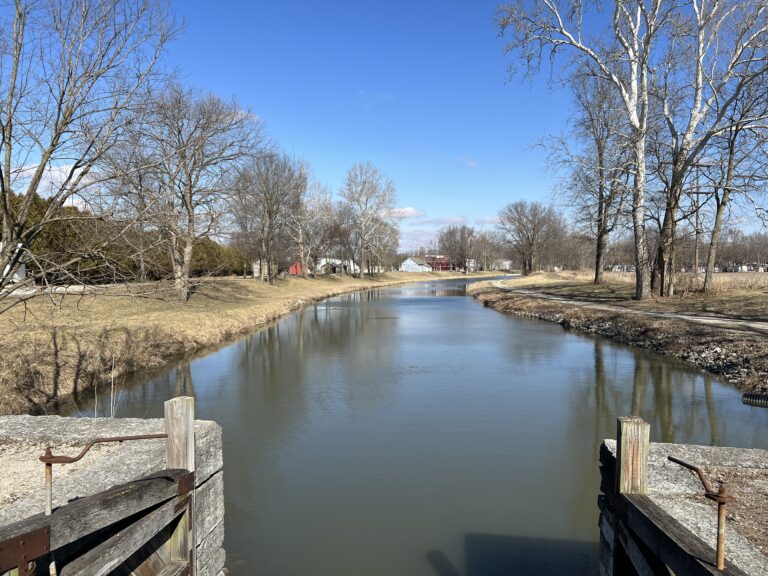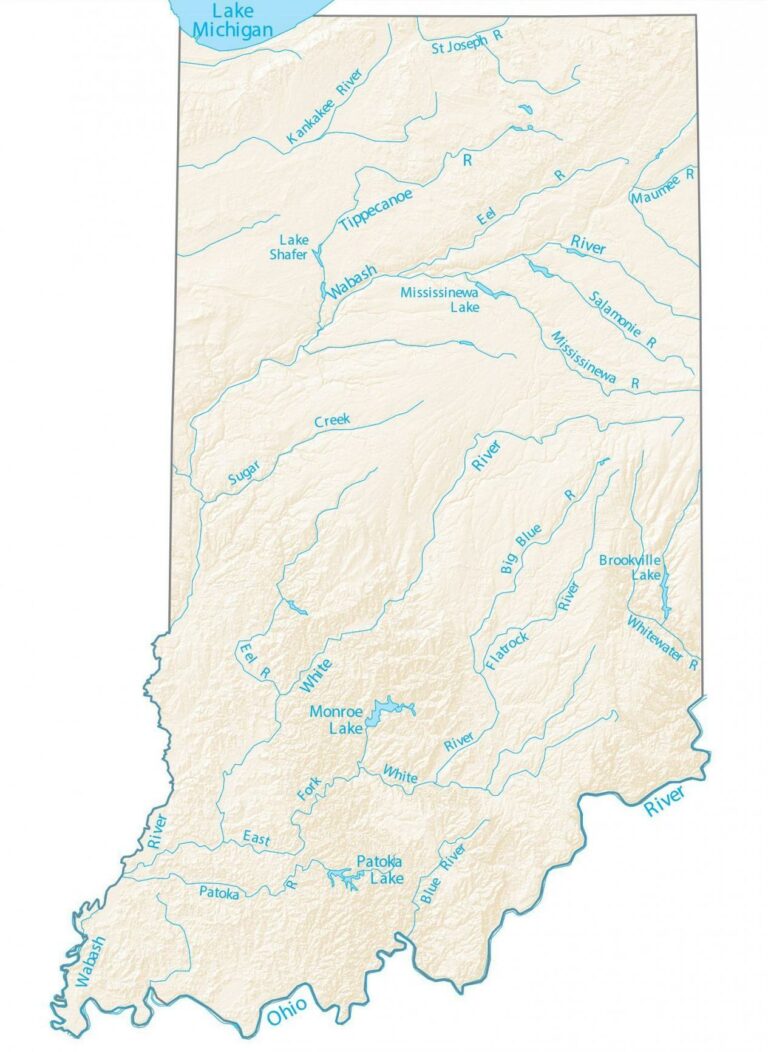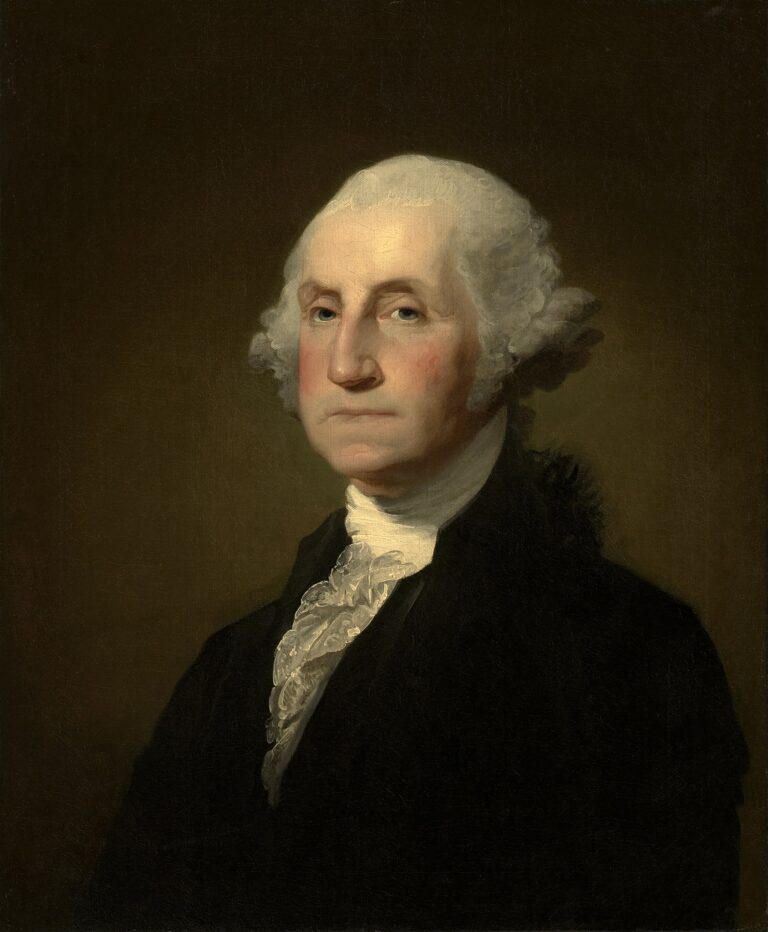This article appeared in our February 2024 newsletter. You can sign up to receive monthly updates from Canal Park in one quick step by visiting our newsletter page.
Today is February 22, and it marks the 192nd anniversary of the groundbreaking ceremony in Fort Wayne for the Wabash & Erie Canal! The unsteady start of canal construction is a fascinating account that offers a glimpse of Indiana politics in the first half of the 19th century.
But first, imagine a 4th grade student who is told by their parent, “I will buy you ice cream today as long as you promise to start your science fair project this semester.” Our young scholar eagerly agrees, with all the usual promises and assurances. Then, on the night before the semester ends, the student jolts awake and remembers: the project is due tomorrow! The student grabs a marker, a poster, and scribbles his name on the back and writes “SCIENCE FAIR PROJECT” on the front. Having fulfilled his end of the bargain, the student decides to think about finishing the project later.
This essentially summarizes how Indiana started the Wabash & Erie Canal, but with much larger stakes.
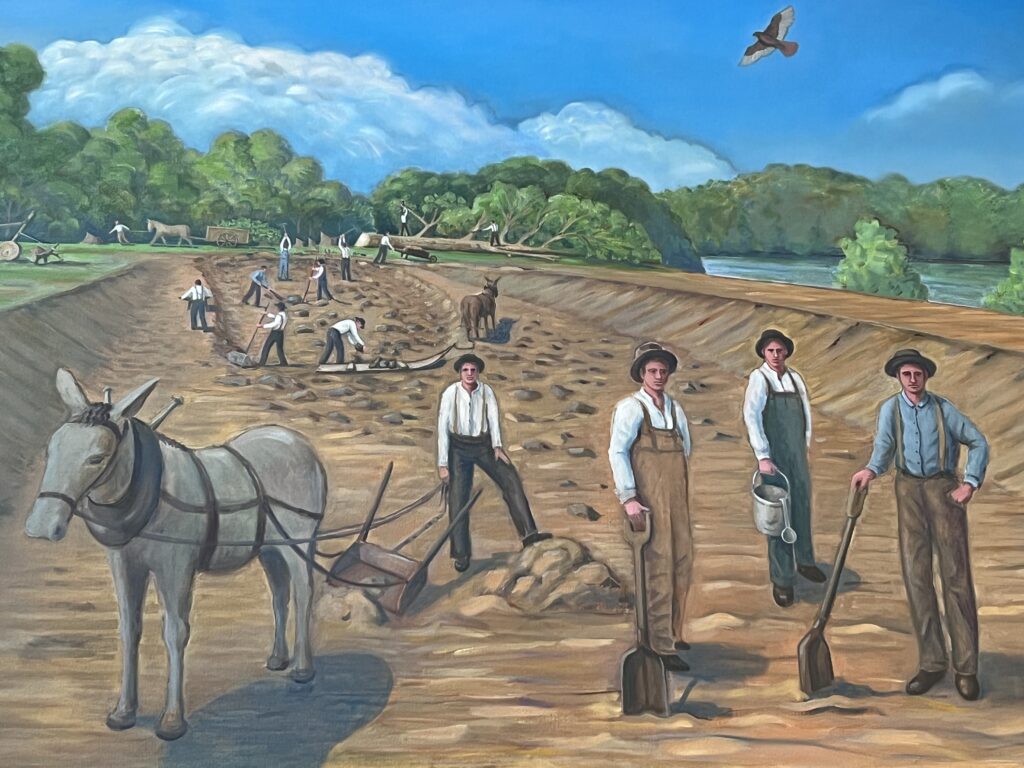
In the 1820’s, it was quite apparent that Indiana needed better options for travel and shipping. The state had a wealth of natural resources and potential for growth, but there was no large-scale means to tap into that wealth. Even a trip from Lafayette to Indianapolis would be a hazardous journey to undertake! Travelers could expect to have their wagons hopelessly stuck as they spent a night or two in a remote forest, perhaps trudging some miles on foot and praying they were walking in the right direction!
The state was not an easy to place to live, but in 1827 the US government offered Indiana a deal that was too good to refuse. The deal went something like this: the federal government would grant a vast strip of land to Indiana along the Wabash River corridor, and Indiana could then sell that land for its own profit. In that same year, Indiana scraped in a measly $33,000 in tax revenue, so this was an opportunity to bring in a windfall of “easy” revenue to fund improvement projects.
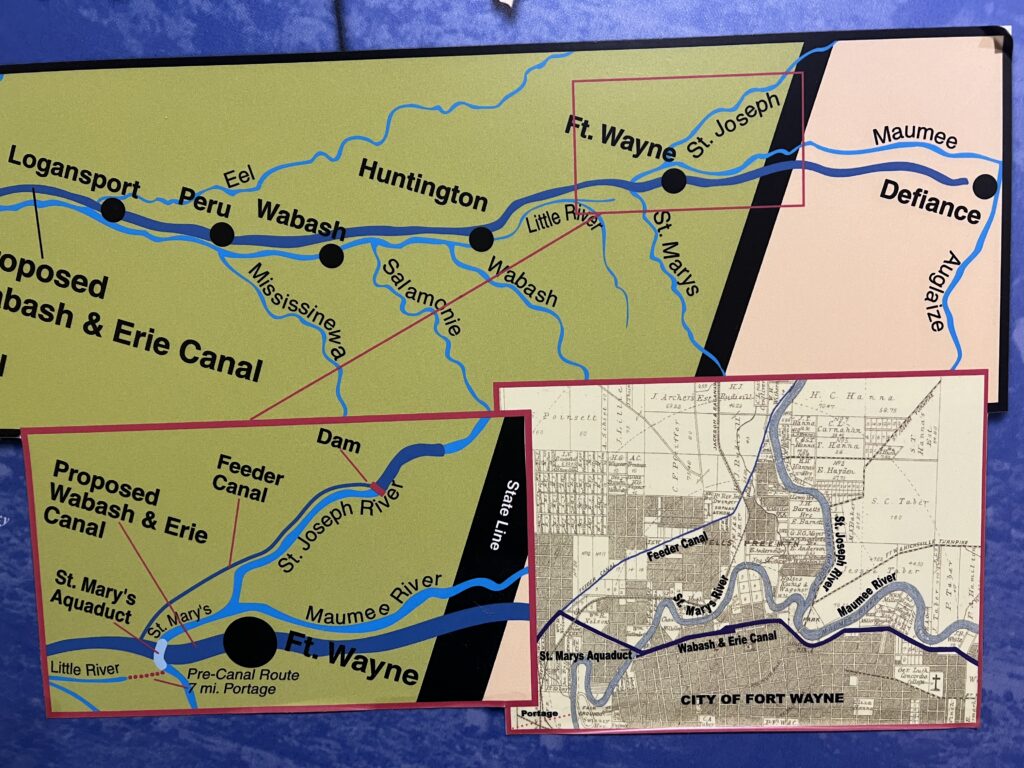
But here’s the catch: in order for Indiana to obtain this land (which had been previously hustled away from Native Americans), the state would have to commit to building a canal along the proposed route to connect the Wabash River to the Maumee River via Fort Wayne.
There was a five year deadline for this bargain. Therefore, Indiana had to start canal construction by early March 1832. Indiana accepted the terms of the deal, and this is where things went off the rails…or towpath.
In a predictable series of events, Indiana’s politicians proceeded to spend most of the next five years arguing and fighting about how to proceed. To detail the finer points of these arguments would take a lot of time, so we’ll spare the gory details for today.
In the 1830-1831 session of the Indiana legislature, there was a motion to adjust the terms of the original deal, which would have permitted the state to build a canal or railroad. This motion passed the Indiana Senate but died in the House and never reached Washington. Indiana was bound to build a canal or forfeit its deal.
This brings us to the anniversary we commemorate. The legislature finally committed to its canal plans in January 1832, and the clock was ticking! Even though July 4th was the traditional date to start new public works, Indiana had to compromise and complete their groundbreaking on February 22 in honor of George Washington’s birthday, who had always dreamed of westward canal connections. But it would also conveniently fall before the dreaded deadline.
Dignitaries gathered on February 22, 1832 at Fort Wayne, with the ground frozen and covered in a foot of snow. The ceremony proceeded without having some important details worked out. For instance, there was no full survey of the canal route. There were no detailed cost estimates. There were no signed contracts. There were no plans drawn. There were no loans secured. Nevertheless, canal commissioner Jordan Vigus and others stabbed the earth with their shovels and achieved the deadline for Indiana to keep its land grant. The work had indeed been technically started. Hooray!

So, like a procrastinating student, Indiana’s leaders inaugurated one of the most ambitious infrastructure projects in US history. The canal helped transform Indiana in the decades to come, even if the political circus created a lot of drama along the way. Happy groundbreaking day!
